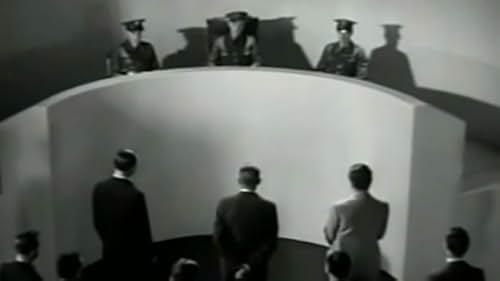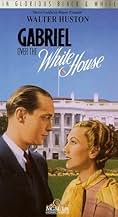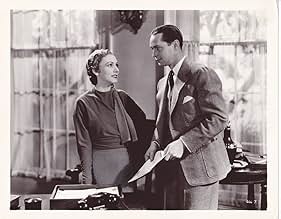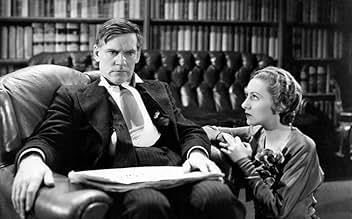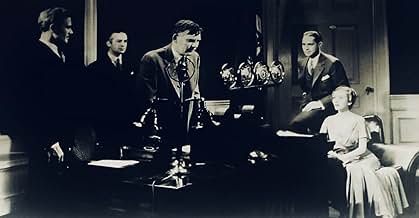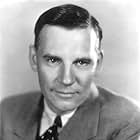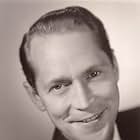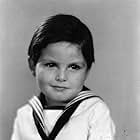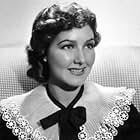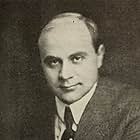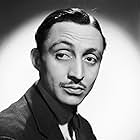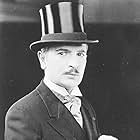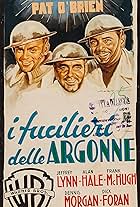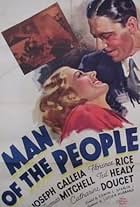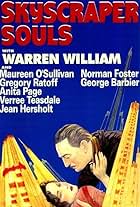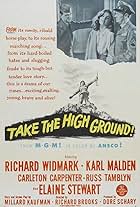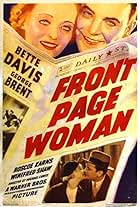VALUTAZIONE IMDb
6,4/10
1459
LA TUA VALUTAZIONE
Un pirata politico diventa presidente durante il culmine della depressione e subisce una metamorfosi in uno statista incorruttibile dopo un incidente quasi fatale.Un pirata politico diventa presidente durante il culmine della depressione e subisce una metamorfosi in uno statista incorruttibile dopo un incidente quasi fatale.Un pirata politico diventa presidente durante il culmine della depressione e subisce una metamorfosi in uno statista incorruttibile dopo un incidente quasi fatale.
Samuel S. Hinds
- Dr. H.L. Eastman
- (as Samuel Hinds)
Claire Du Brey
- Nurse
- (as Claire DuBrey)
Oscar Apfel
- German Delegate to Debt Conference
- (non citato nei titoli originali)
Mischa Auer
- Mr. Thieson
- (non citato nei titoli originali)
Max Barwyn
- German Officer
- (non citato nei titoli originali)
Jack Baxley
- Unemployed Marcher
- (non citato nei titoli originali)
Brooks Benedict
- White House Press Correspondent
- (non citato nei titoli originali)
Margaret Bert
- Nurse Bert
- (non citato nei titoli originali)
B.F. Blinn
- Politician
- (non citato nei titoli originali)
Trama
Lo sapevi?
- QuizThe protest march of the "army of the unemployed" in the story was no doubt a reference to the protest march of the "Bonus Army" in 1932, where veterans of WWI marched on Congress to demand payment of promised bonuses. They were attacked with tanks and tear gas by the U.S. Army led by Gen. Douglas MacArthur on orders of President Herbert Hoover. William Randolph Hearst, who railed against that action in his newpapers, saw to it that the President in this film helped the people. Meanwhile, Louis B. Mayer, a staunch Republican, delayed the movie until Hoover was out of office.
- BlooperThrough out the whole movie Walter Huston's hair is combed differently in one continuous scene after another. It's obvious many of the cuts back to him are from different takes.
- Citazioni
Jimmy Vetter: I got a speech.
Hon. Judson Hammond - The President of the United States: A speech? Let's hear it.
Jimmy Vetter: I love my uncle Judd because he's going to cure the Depression and make everybody rich.
- Versioni alternativeIn 1995, the Madrid Filmoteca screened both the American version and the little-seen European version of Gabriel Over the White House. In the European version, Hammond is seen to go just that much further into fascism. It also features a significantly altered ending. In the American version, Hammond is nobly struck down at the end, whereas in the European version, Pendie actually chooses NOT to save him, because she sees what he has become.
- ConnessioniFeatured in The Great Depression (1993)
- Colonne sonoreSymphony No. 1 in C minor Op. 68 IV. Adagio
(1876) (uncredited)
Music by Johannes Brahms
A fourth movement theme is played during the opening credits
The same theme is used often as a leitmotif suggesting Archangel Gabriel's presence
Recensione in evidenza
I call this a precode in an unusual sense of the term. "Precode" usually drums up visions of movies like "Baby Face" and "The Divorcée" - films filled with sexually controversial situations and language for that period of time (1928-1934). However, precode was more than this. It also involved political ideas that were over the top and the existential doubts that made the fine horror films of Universal Studios in the early 30's. This film is definitely a political precode. The censors would have never allowed such a film to be released just 18 months later. At this point I quote Wikipedia, which gives some context for the film:
"Filmed during the 1932 presidential election on the orders of media magnate William Randolph Hearst, the film was intended to be an instructional guide for Franklin D. Roosevelt during his presidency. Hammond as he exists prior to his accident is an amalgamation of caricatures of Presidents Warren G. Harding, Calvin Coolidge, and Herbert Hoover, Roosevelt's immediate predecessors. After his accident, he is Hearst's idealized image of the perfect president, the president he wanted Roosevelt to be."
Hearst always had great sway at MGM, with him also directing the career of his mistress, Marion Davies, at that same studio. President Judd Hammond in his "idealized" form is much more of a fascist than a socialist, though, declaring martial law and putting people in charge of trials because they have a grudge against the defendant. It is also interesting that Pres. Hammond after his transformation not only has a new interest in the welfare of the citizens, but he is rendered sexually neutral, addressing his former mistress as Miss rather than by her first name. It is like Judd Hammond has had some supernatural being possess his body more than it seems that Hammond has had some kind of transformation of his own world view.
Definitely recommended. I don't think I've ever seen a film quite like it.
"Filmed during the 1932 presidential election on the orders of media magnate William Randolph Hearst, the film was intended to be an instructional guide for Franklin D. Roosevelt during his presidency. Hammond as he exists prior to his accident is an amalgamation of caricatures of Presidents Warren G. Harding, Calvin Coolidge, and Herbert Hoover, Roosevelt's immediate predecessors. After his accident, he is Hearst's idealized image of the perfect president, the president he wanted Roosevelt to be."
Hearst always had great sway at MGM, with him also directing the career of his mistress, Marion Davies, at that same studio. President Judd Hammond in his "idealized" form is much more of a fascist than a socialist, though, declaring martial law and putting people in charge of trials because they have a grudge against the defendant. It is also interesting that Pres. Hammond after his transformation not only has a new interest in the welfare of the citizens, but he is rendered sexually neutral, addressing his former mistress as Miss rather than by her first name. It is like Judd Hammond has had some supernatural being possess his body more than it seems that Hammond has had some kind of transformation of his own world view.
Definitely recommended. I don't think I've ever seen a film quite like it.
I più visti
Accedi per valutare e creare un elenco di titoli salvati per ottenere consigli personalizzati
Dettagli
- Data di uscita
- Paese di origine
- Lingue
- Celebre anche come
- El despertar de una nación
- Luoghi delle riprese
- Palos Verdes Estates, California, Stati Uniti(Lee Highway to Arlington Cemetery)
- Aziende produttrici
- Vedi altri crediti dell’azienda su IMDbPro
- Tempo di esecuzione1 ora 26 minuti
- Colore
- Proporzioni
- 1.37 : 1
Contribuisci a questa pagina
Suggerisci una modifica o aggiungi i contenuti mancanti

Divario superiore
By what name was Gabriel Over the White House (1933) officially released in India in English?
Rispondi
